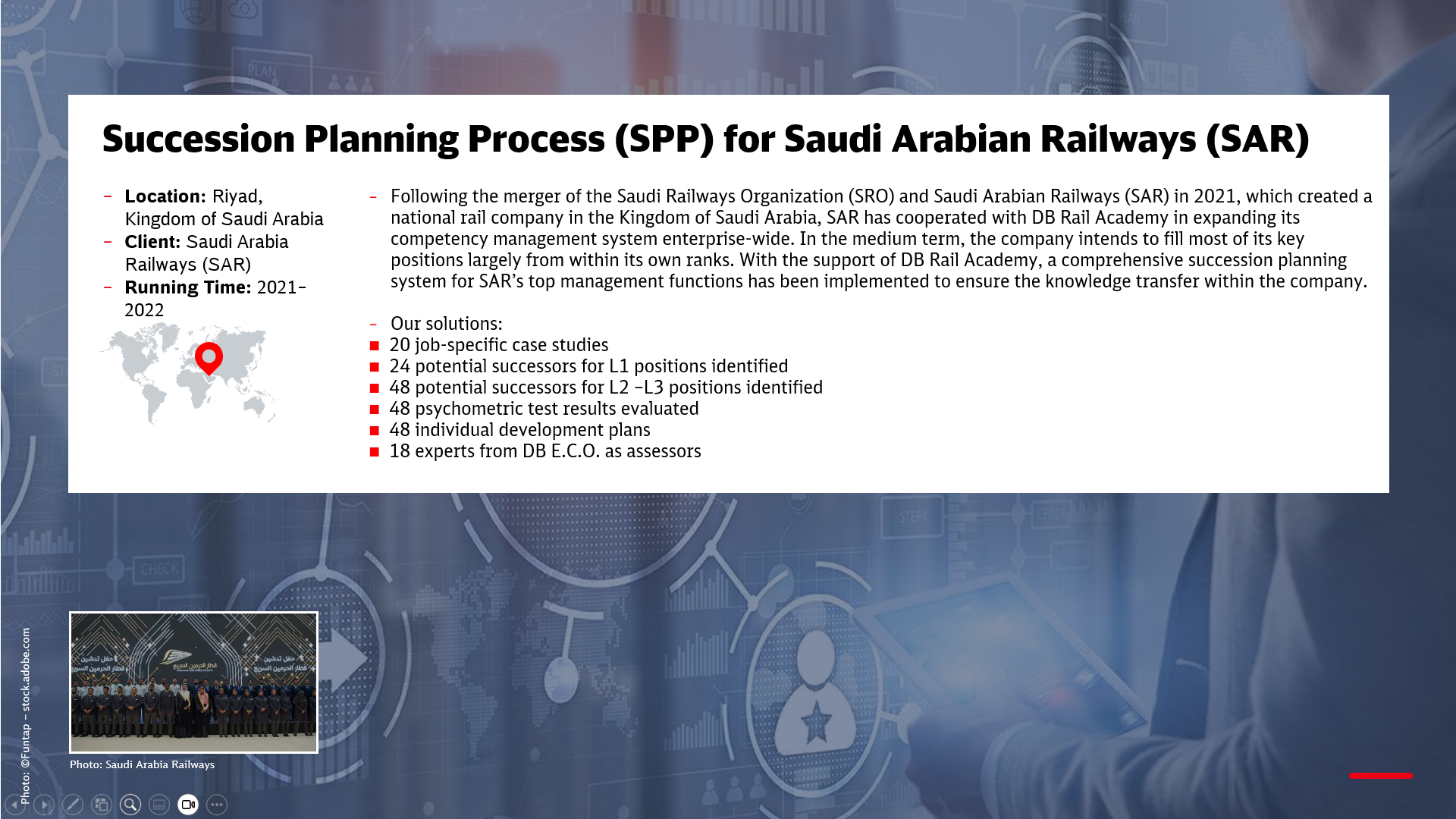Succession Management
Building Leadership from Within the Railway Sector
We assist in identifying and securing key technical and leadership positions. The identification of potential future successors, the assessment of possible future employee retirements and the creation of individual development plans are important principles of succession management.
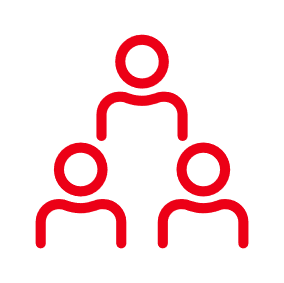 Succession Management is a strategic process used by organizations to ensure that key roles can be filled with qualified and prepared individuals when vacancies arise. It involves identifying critical positions, assessing internal talent, and developing employees over time to take on greater responsibilities. The goal is to reduce risk, retain knowledge, and maintain business continuity by proactively preparing for leadership transitions and skill gaps - rather than reacting to them.
Succession Management is a strategic process used by organizations to ensure that key roles can be filled with qualified and prepared individuals when vacancies arise. It involves identifying critical positions, assessing internal talent, and developing employees over time to take on greater responsibilities. The goal is to reduce risk, retain knowledge, and maintain business continuity by proactively preparing for leadership transitions and skill gaps - rather than reacting to them.
Our Offer
Our Succession Management solution empowers railway organizations to identify, prepare, and develop internal talent for future leadership roles. By combining competency-based assessments with readiness evaluations and individual development paths, we create a structured, data-driven foundation for long-term workforce sustainability. We assess technical, functional, and behavioral competencies to generate clear talent insights and define tailored development strategies. This enables organizations to make informed decisions on promotion, training, and succession, ensuring that key positions can be filled reliably and effectively from within.
Comprehensive, Modular Succession Management Tailored to Your Needs
Our succession management approach covers every phase of the succession lifecycle—from role identification and competency assessment to readiness evaluation and targeted development. The modular design ensures it can be tailored to meet each client’s specific organizational needs.
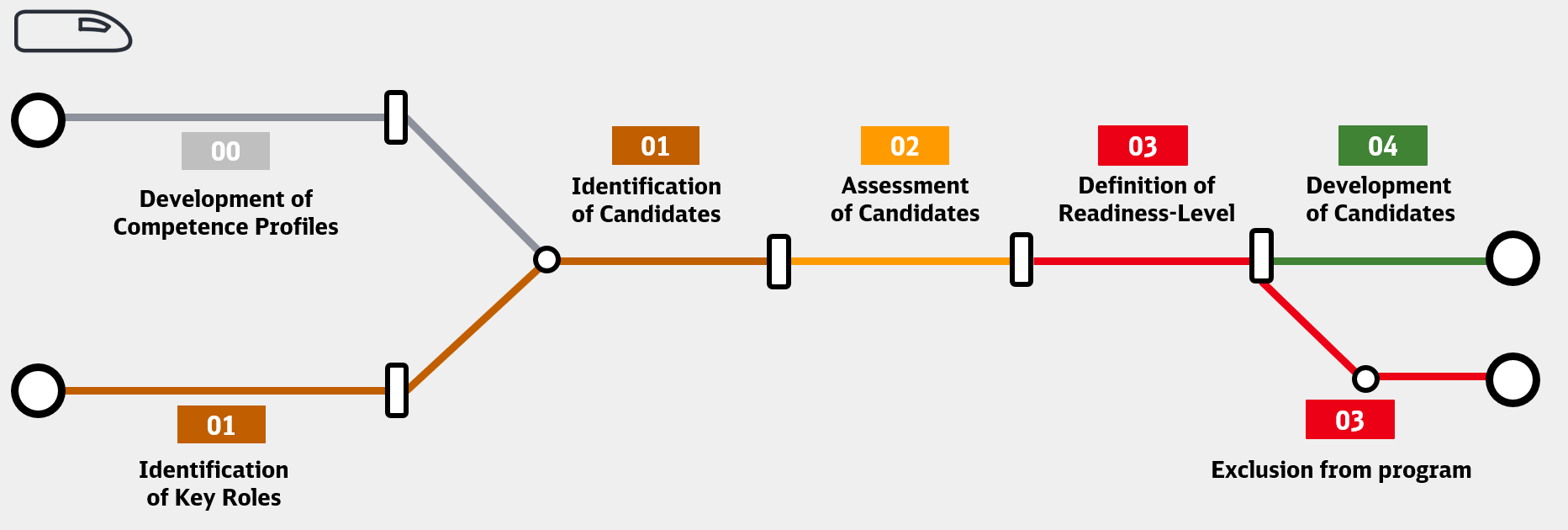
An effective succession management requires a clear competence management framework for each position involved. This includes defining specific competency profiles, which enables proper assessment and determination of readiness levels for future roles.
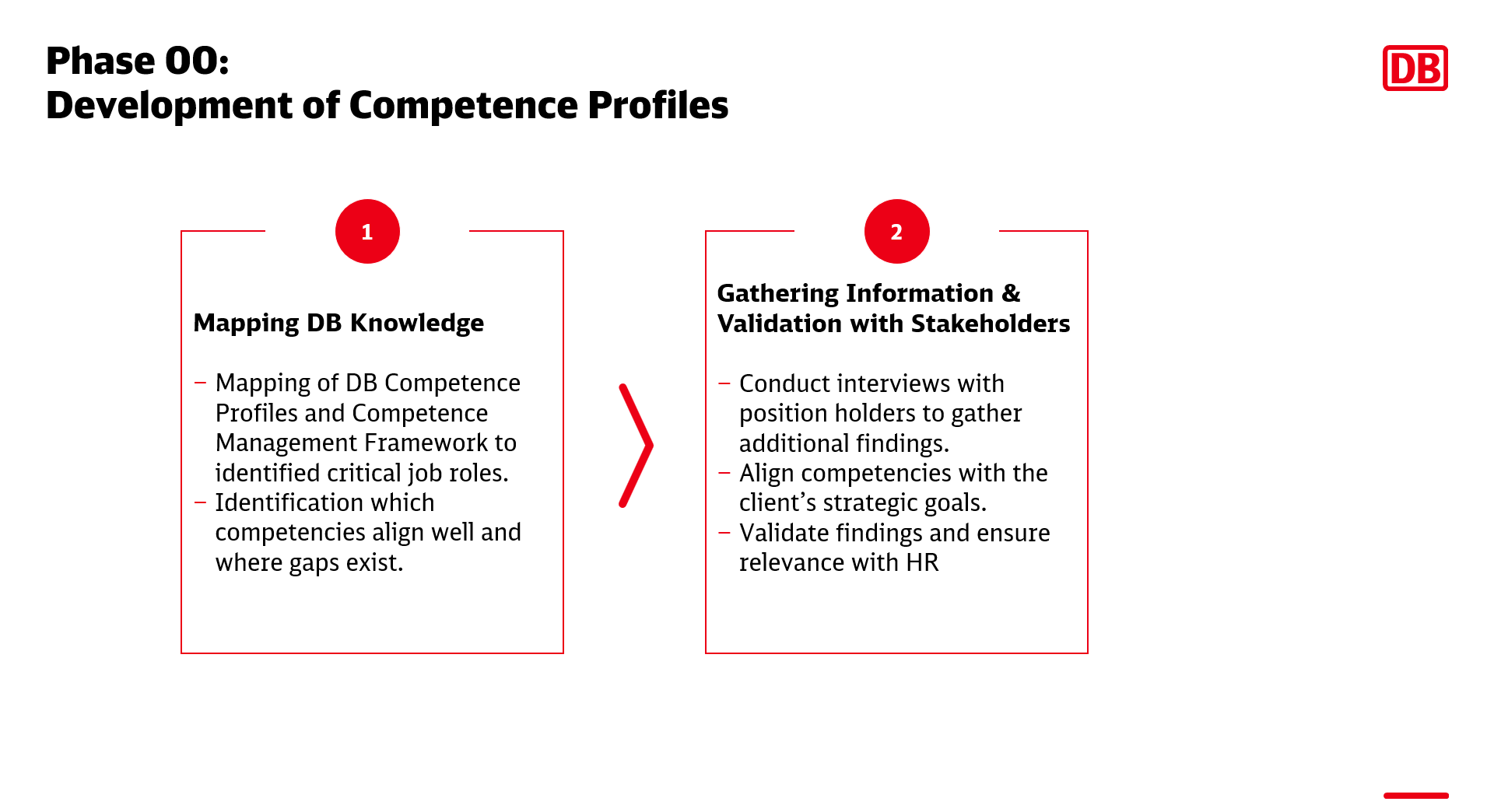
At DB, we have implemented a comprehensive succession management process to identify critical positions and develop a pipeline of potential successors, ensuring long-term workforce resilience amid demographic challenges.
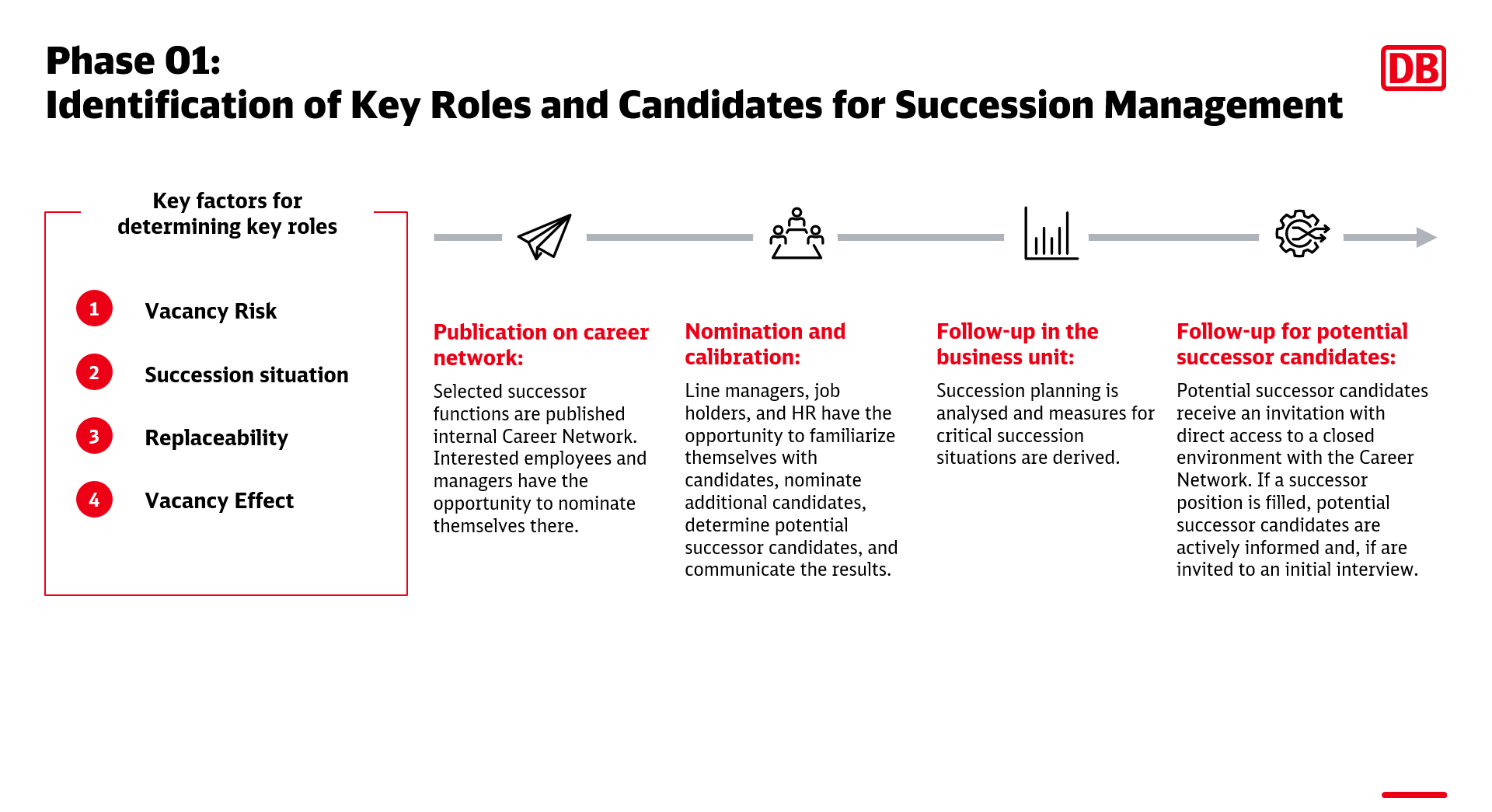
At the core of our succession management approach, this stage evaluates candidates against predefined competence profiles. Through psychometric tests, case studies, panel presentations, and critical event interviews, we gain deep insights into their skills and potential.
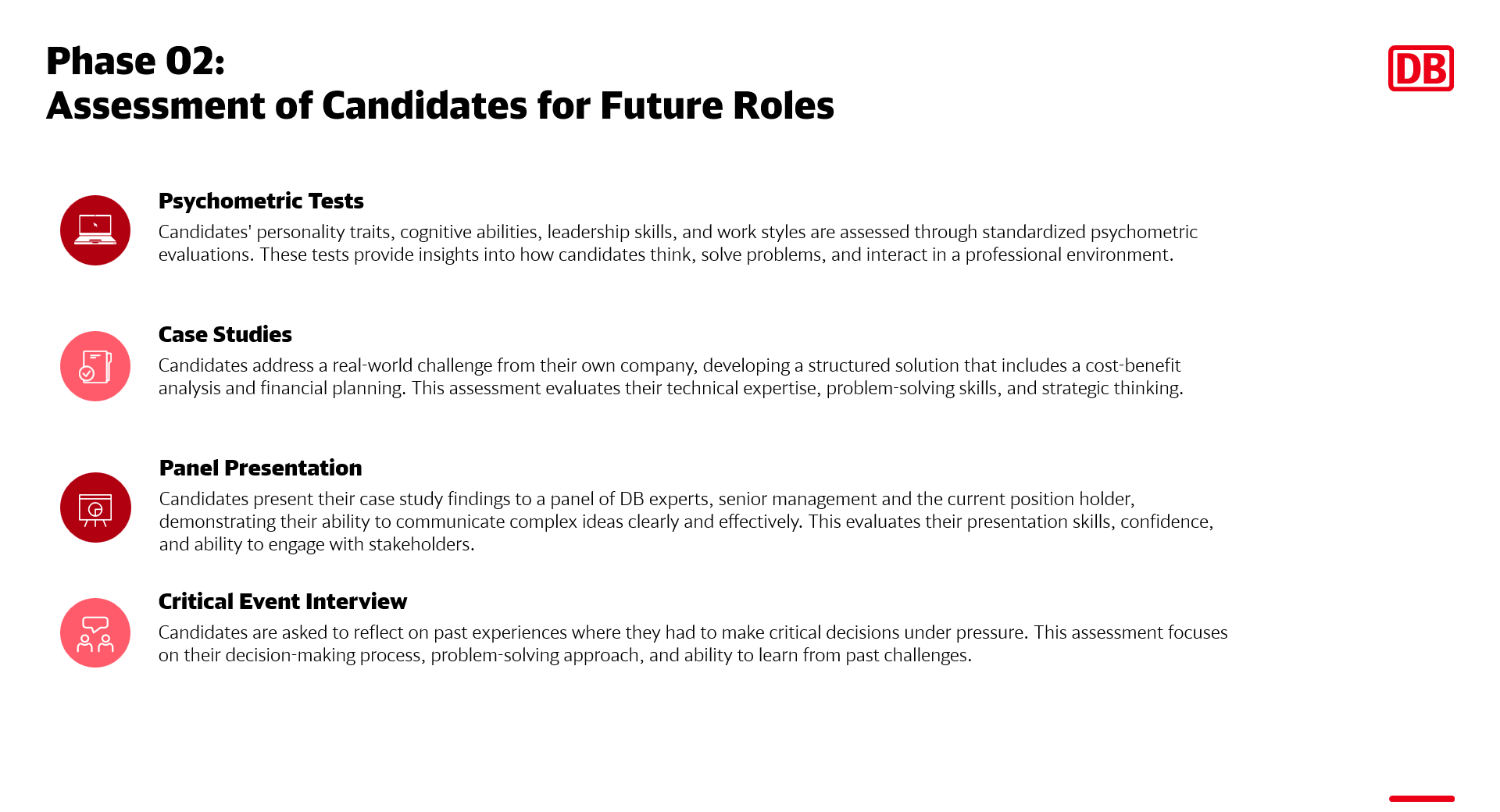
After the assessments are conducted, the score will be translated into a unified scoring modell which will defined define each candidates' readiness levels for his or her future role.
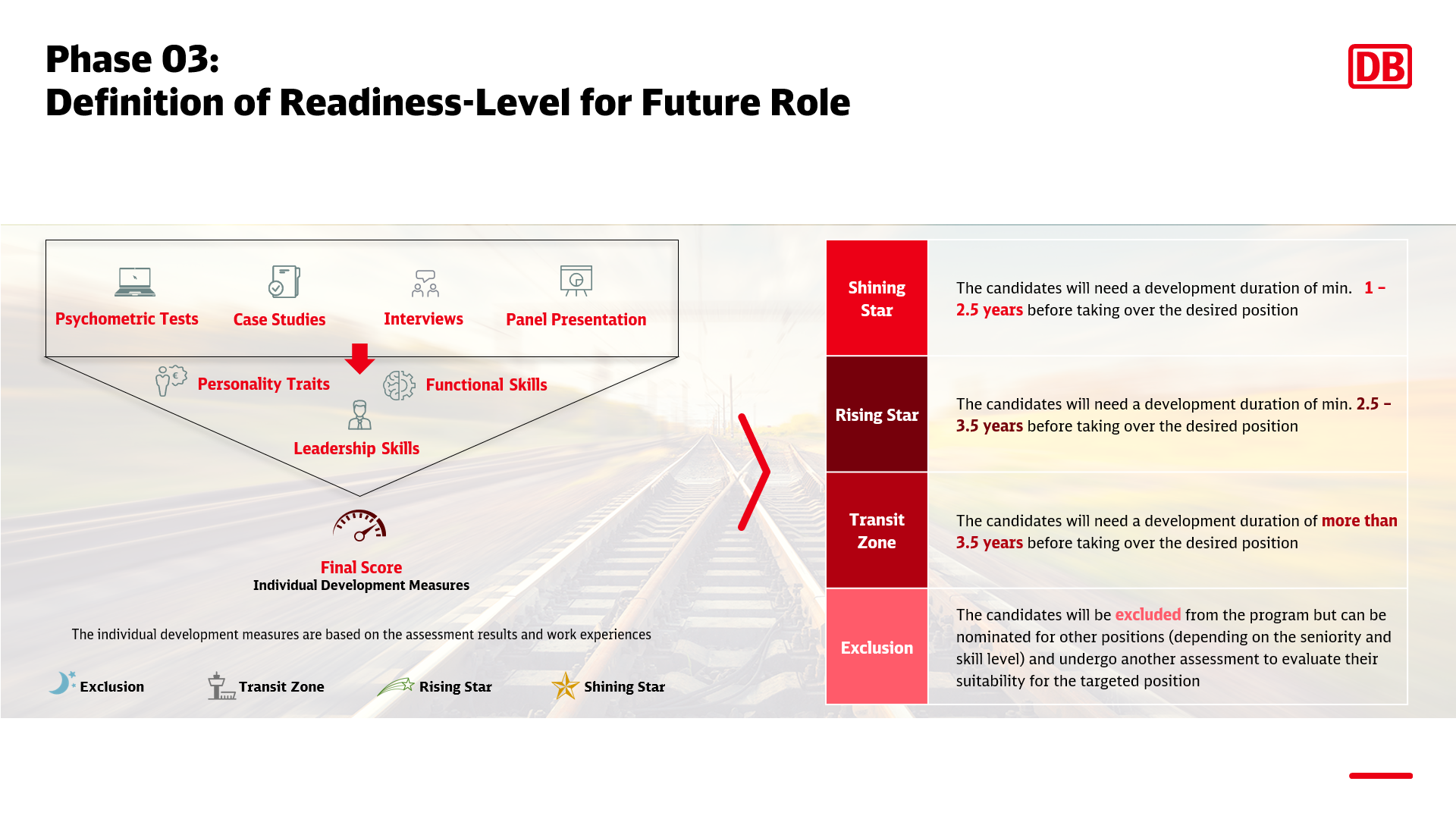
After the assessment results are translated into readiness scores, a personalized development journey begins. This process includes tailored feedback and clear action steps to ensure steady progress toward leadership roles. Monitoring of the development plan is integrated throughout, ensuring that goals are met and adjustments are made where necessary.

Example of an Individual Development Plan: Based on different development measure types

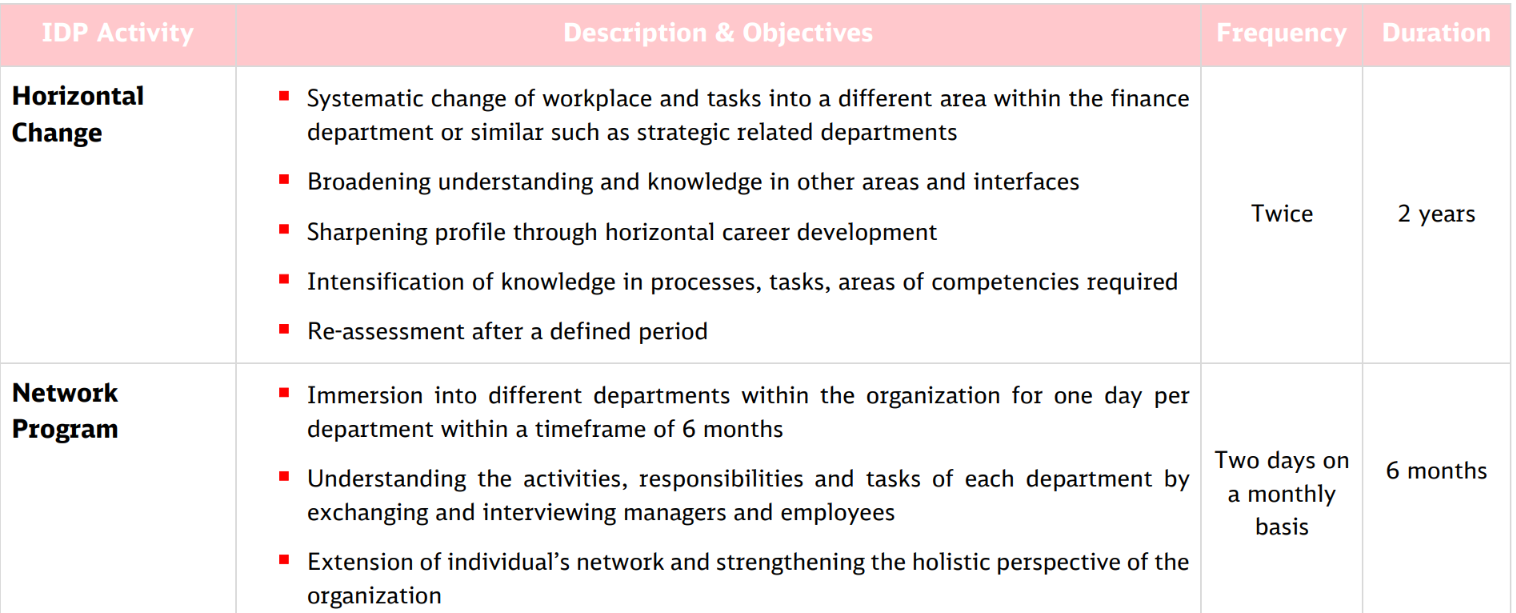
Example of an Implementation Plan: Implementation plan for monitoring reasons

Current Milestones from the DB internal Succession Management Program
Since its launch in 2019, the DB succession management process has reached key milestones and received industry recognition through awards such as the St. Gallen Leadership Award.
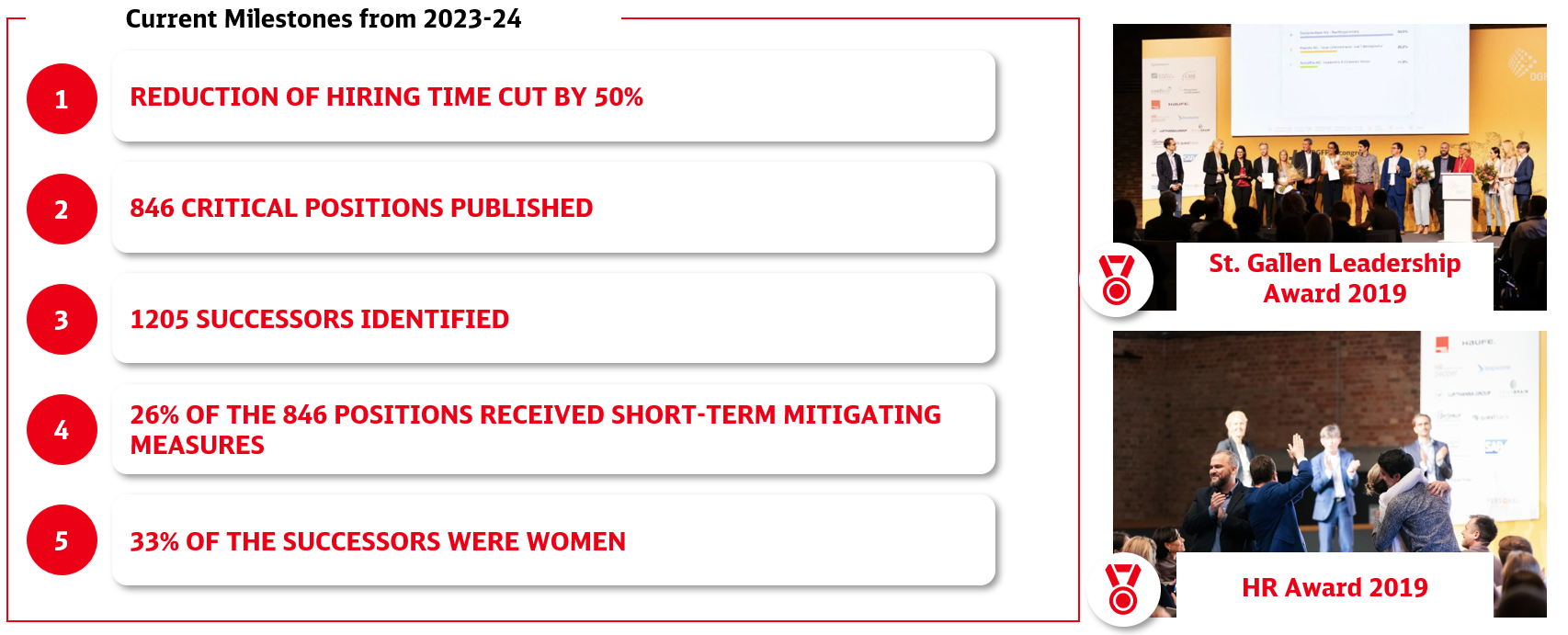
One example of a previous project
